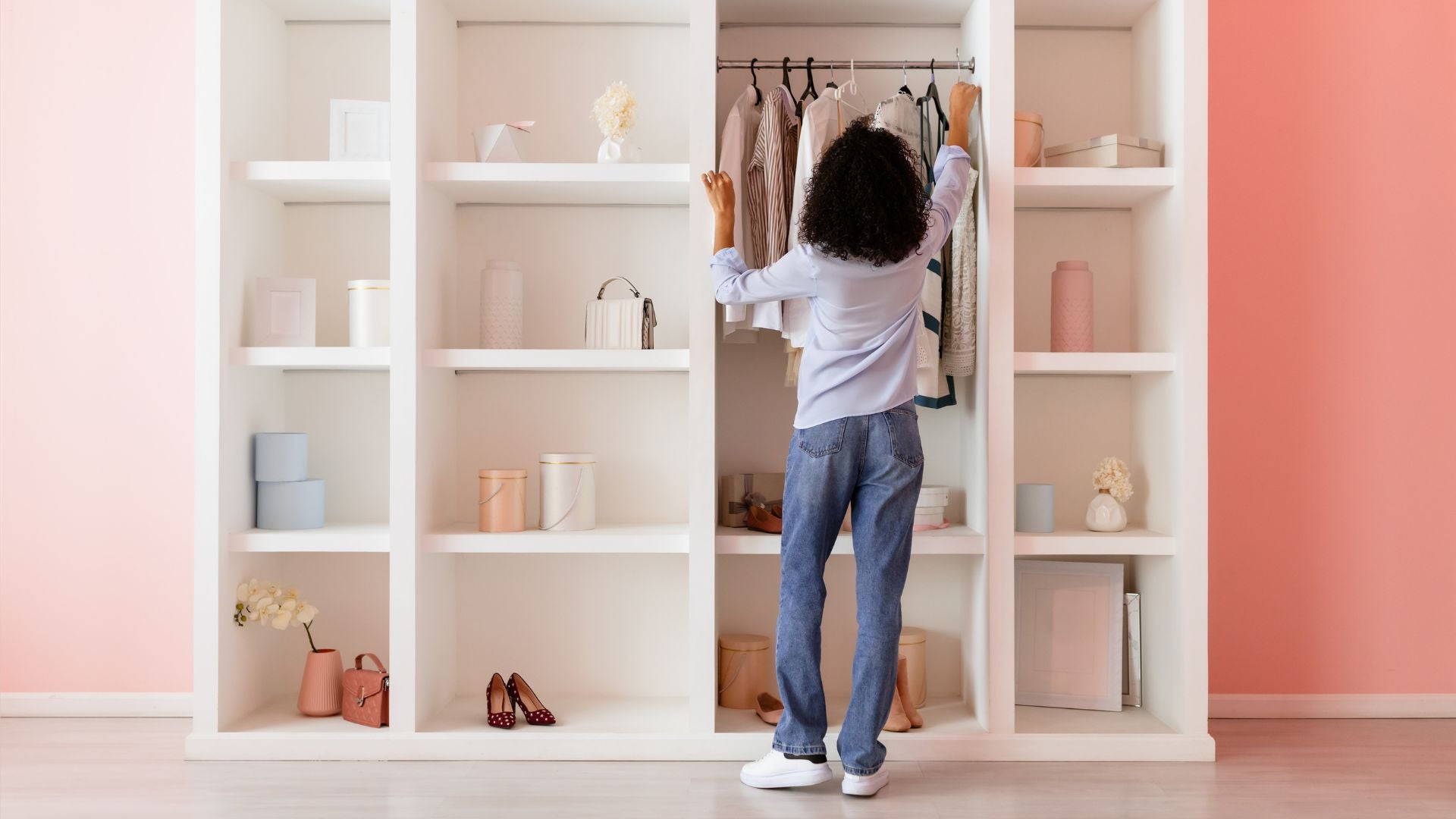Have you ever noticed how a cluttered space can make your stress levels soar? Suddenly, you're tripping over shoes, searching frantically for your keys, and feeling overwhelmed. It's like your home is plotting against your peace of mind.
Fear not! I got you! I'm here to arm you with simple,
actionable steps to reclaim your space and perhaps, your sanity.
First things first: understanding the clutter effect on your mental well-being. Studies show that excessive clutter can trigger stress and anxiety.
It's not just about aesthetics—decluttering can actually be a form of self-care. So, let's transform your home into a zen zone where you can breathe and move freely.

Step 1: Set Clear Goals
Before you dive into the sea of stuff, it’s crucial to set clear, achievable goals. Are you aiming to declutter the entire house, or is this a one-room mission? Setting specific goals helps you stay focused and avoid feeling overwhelmed. Remember, even clearing out a single drawer counts
as a win in the clutter battle.
Step 2: The Five-Box Method
Introducing the Five-Box Method: Keep, Donate, Sell, Recycle, and Trash. As you sift through your belongings, sort everything into these categories. This method not only speeds up the decluttering process but also encourages responsible disposal and recycling practices.
Step 3: One Room at a Time
Tackle one room at a time to avoid burnout. Start with the area that gives you the most stress, often the kitchen or living room.
Clearing just one room can dramatically increase your motivation and provide a sense of accomplishment that propels you through the rest of the home.
Step 4: The 90-Day Rule
If you haven’t used an item in the last 90 days, and don’t plan to use it in the upcoming 90, it might be time to say goodbye. This rule helps cut down on the "just in case" items that typically do
nothing but take up space.
Step 5: Digitize What You Can
In the digital age, there’s no need to keep stacks of documents, CDs, or even DVDs. Digitizing these items can free up physical space and reduce visual clutter. Plus, digital items are often easier to organize and find.
Step 6: Regular Mini Declutter Sessions
Incorporate mini declutter sessions into your routine.
Spending just 15 minutes a day tackling small areas can keep your home clutter-free without the need for major clean ups. Think of it as daily upkeep for your living space.
Remember, decluttering isn't a one-and-done deal; it’s about creating and maintaining habits that ensure a clutter-free environment.
Celebrate your progress, no matter how small, and enjoy the calmness a tidy home can bring. After all, your living space should be a sanctuary, not a source of stress.

Maximize Storage Solutions
To truly conquer clutter, effective storage solutions are key. Invest in multi-functional furniture such as ottomans with storage, shelving units, and under-bed containers. These can hide away items neatly and keep them accessible. Utilizing vertical space with tall bookcases or floating shelves can also free up valuable floor space, making your rooms feel larger and more open.
The Importance of Maintaining Zones
Divide your space into designated 'zones' where each item has a home. For instance, create a specific area in your living room for magazines, remotes, and entertainment devices. In the kitchen, designate areas for cooking tools, spices, and appliances. This not only helps in keeping the space organized but also makes it easier to find everything you need without having to sift through clutter.
Tackling Sentimental Clutter
Sentimental items can be the hardest to manage. To handle these, create a digital archive for things like old photographs, important documents, and even kids' artwork. For items that you want to keep, consider dedicated display cases or memory boxes that allow you to store these treasures in an organized and respectful way.
Implement a "One In, One Out" Rule
To keep your home clutter-free over the long term, adopt the "one in, one out" rule: for every new item that comes in, an old one has to go. This is particularly effective for clothing, books, and toys. This policy helps prevent the accumulation of unused items and encourages you to think critically about new purchases.
Make Decluttering a Family Activity
Turn decluttering into a fun family activity where everyone participates. Set a timer and challenge each other to see who can declutter their space the fastest. Celebrate with a family treat or outing afterwards. This not only makes the process less daunting but also teaches everyone the importance of keeping their space tidy.
Regular Review and Adjustments
As life changes, so do your space needs. Regularly review your living areas to ensure that the organization still works for you. Adjust as necessary, perhaps quarterly or with the changing seasons. This regular audit helps catch any new clutter before it becomes overwhelming and ensures your systems are always optimized.
Embrace the Minimalist Mindset
While not everyone wants to live with the absolute minimum, embracing a minimalist mindset can help reduce clutter. This means focusing on quality over quantity and ensuring that each item in your home serves a purpose or brings you joy.

Conclusion
Expanding your approach to decluttering with these practical strategies can transform not only your physical space but also your
mental well-being. A clutter-free home supports a clear mind and fosters an environment where you can relax fully and enjoy your time at home.
Remember, decluttering is not just about removing things but about creating a positive space that enhances your daily life.

More like this straight to your inbox?
About once a month I send out inspiration, tips, special offers, and seasonal discounts.
No spam. Unsubscribe whenever you want.




















